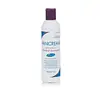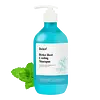What's inside
What's inside
 Key Ingredients
Key Ingredients

No key ingredients
 Benefits
Benefits

 Concerns
Concerns

 Ingredients Side-by-side
Ingredients Side-by-side

Zinc Pyrithione 2%
AntiseborrhoeicWater
Skin ConditioningLauryl Glucoside
CleansingCoco-Glucoside
CleansingAcrylates Copolymer
Panthenol
Skin ConditioningPentylene Glycol
Skin ConditioningGlycerin
HumectantSucrose Cocoate
EmulsifyingDisodium Cocoyl Glutamate
CleansingSodium Cocoyl Glycinate
CleansingBehenyl Alcohol
EmollientSucrose Stearate
EmollientCetyl Palmitate
EmollientSodium Cocoyl Glutamate
Cleansing1,2-Hexanediol
Skin ConditioningSodium Hydroxide
BufferingCaprylyl Glycol
EmollientSodium Chloride
MaskingZinc Pyrithione 2%, Water, Lauryl Glucoside, Coco-Glucoside, Acrylates Copolymer, Panthenol, Pentylene Glycol, Glycerin, Sucrose Cocoate, Disodium Cocoyl Glutamate, Sodium Cocoyl Glycinate, Behenyl Alcohol, Sucrose Stearate, Cetyl Palmitate, Sodium Cocoyl Glutamate, 1,2-Hexanediol, Sodium Hydroxide, Caprylyl Glycol, Sodium Chloride
Water
Skin ConditioningDisodium Laureth Sulfosuccinate
CleansingLauryl Betaine
CleansingCocamide Mipa
EmulsifyingSodium Cocoyl Alaninate
Sodium Cocoyl Isethionate
CleansingC12-13 Pareth-9
EmulsifyingSodium Chloride
MaskingMenthol
MaskingLauryl Glucoside
CleansingMentha Arvensis Leaf Oil
MaskingDipropylene Glycol
Humectant1,2-Hexanediol
Skin ConditioningCitric Acid
BufferingHydroxyacetophenone
AntioxidantPanthenol
Skin ConditioningSalicylic Acid
MaskingPolyquaternium-10
Niacinamide
SmoothingTetrasodium EDTA
Mentha Suaveolens Leaf Extract
AstringentButylene Glycol
HumectantMelaleuca Alternifolia Leaf Water
AntimicrobialPropanediol
SolventPrunus Mume Fruit Extract
HumectantMalus Domestica Fruit Extract
AntioxidantCarica Papaya Fruit Extract
Skin ConditioningVitis Vinifera Fruit Extract
Skin ConditioningCyclodextrin
AbsorbentHydrolyzed Vegetable Protein
Skin ConditioningCamellia Sinensis Leaf Extract
AntimicrobialMaltodextrin
AbsorbentPentylene Glycol
Skin ConditioningThymus Vulgaris Leaf Extract
Skin ProtectingEthylhexylglycerin
Skin ConditioningCaprylyl Glycol
EmollientMadecassoside
AntioxidantHydrolyzed Soy Protein Extract
Skin ConditioningLimonene
PerfumingWater, Disodium Laureth Sulfosuccinate, Lauryl Betaine, Cocamide Mipa, Sodium Cocoyl Alaninate, Sodium Cocoyl Isethionate, C12-13 Pareth-9, Sodium Chloride, Menthol, Lauryl Glucoside, Mentha Arvensis Leaf Oil, Dipropylene Glycol, 1,2-Hexanediol, Citric Acid, Hydroxyacetophenone, Panthenol, Salicylic Acid, Polyquaternium-10, Niacinamide, Tetrasodium EDTA, Mentha Suaveolens Leaf Extract, Butylene Glycol, Melaleuca Alternifolia Leaf Water, Propanediol, Prunus Mume Fruit Extract, Malus Domestica Fruit Extract, Carica Papaya Fruit Extract, Vitis Vinifera Fruit Extract, Cyclodextrin, Hydrolyzed Vegetable Protein, Camellia Sinensis Leaf Extract, Maltodextrin, Pentylene Glycol, Thymus Vulgaris Leaf Extract, Ethylhexylglycerin, Caprylyl Glycol, Madecassoside, Hydrolyzed Soy Protein Extract, Limonene
 Reviews
Reviews

Ingredients Explained
These ingredients are found in both products.
Ingredients higher up in an ingredient list are typically present in a larger amount.
1,2-Hexanediol is a synthetic liquid and another multi-functional powerhouse.
It is a:
- Humectant, drawing moisture into the skin
- Emollient, helping to soften skin
- Solvent, dispersing and stabilizing formulas
- Preservative booster, enhancing the antimicrobial activity of other preservatives
Caprylyl Glycol is a humectant and emollient, meaning it attracts and preserves moisture.
It is a common ingredient in many products, especially those designed to hydrate skin. The primary benefits are retaining moisture, skin softening, and promoting a healthy skin barrier.
Though Caprylyl Glycol is an alcohol derived from fatty acids, it is not the kind that can dry out skin.
This ingredient is also used as a preservative to extend the life of products. It has slight antimicrobial properties.
Learn more about Caprylyl GlycolLauryl Glucoside sugar- and lipid-based cleansing agent. It is created from glucose and lauryl alcohol.
This ingredient is a surfactant, making it easier to rinse oil, dirt, and other pollutants away.
A British study found lauryl glucoside to cause skin sensitivity for some people. We recommend speaking with a professional if you have concerns.
Other names for this ingredient include "Lauryl Polyglucose", "Lauryl glycoside", and "D-Glucopyranoside".
Learn more about Lauryl GlucosidePanthenol is a common ingredient that helps hydrate and soothe the skin. It is found naturally in our skin and hair.
There are two forms of panthenol: D and L.
D-panthenol is also known as dexpanthenol. Most cosmetics use dexpanthenol or a mixture of D and L-panthenol.
Panthenol is famous due to its ability to go deeper into the skin's layers. Using this ingredient has numerous pros (and no cons):
Like hyaluronic acid, panthenol is a humectant. Humectants are able to bind and hold large amounts of water to keep skin hydrated.
This ingredient works well for wound healing. It works by increasing tissue in the wound and helps close open wounds.
Once oxidized, panthenol converts to pantothenic acid. Panthothenic acid is found in all living cells.
This ingredient is also referred to as pro-vitamin B5.
Learn more about PanthenolPentylene glycol is typically used within a product to thicken it. It also adds a smooth, soft, and moisturizing feel to the product. It is naturally found in plants such as sugar beets.
The hydrophilic trait of Pentylene Glycol makes it a humectant. As a humectant, Pentylene Glycol helps draw moisture from the air to your skin. This can help keep your skin hydrated.
This property also makes Pentylene Glycol a great texture enhancer. It can also help thicken or stabilize a product.
Pentylene Glycol also acts as a mild preservative and helps to keep a product microbe-free.
Some people may experience mild eye and skin irritation from Pentylene Glycol. We always recommend speaking with a professional about using this ingredient in your routine.
Pentylene Glycol has a low molecular weight and is part of the 1,2-glycol family.
Learn more about Pentylene GlycolChances are, you eat sodium chloride every day. Sodium Chloride is also known as table salt.
This ingredient has many purposes in skincare: thickener, emulsifier, and exfoliator.
You'll most likely find this ingredient in cleansers where it is used to create a gel-like texture. As an emulsifier, it also prevents ingredients from separating.
There is much debate on whether this ingredient is comedogenic. The short answer - comedogenic ratings don't tell the whole story. Learn more about comegodenic ratings here.
The concensus about this ingredient causing acne seems to be divided. Research is needed to understand if this ingredient does cause acne.
Scrubs may use salt as the primary exfoliating ingredient.
Learn more about Sodium ChlorideWater. It's the most common cosmetic ingredient of all. You'll usually see it at the top of ingredient lists, meaning that it makes up the largest part of the product.
So why is it so popular? Water most often acts as a solvent - this means that it helps dissolve other ingredients into the formulation.
You'll also recognize water as that liquid we all need to stay alive. If you see this, drink a glass of water. Stay hydrated!
Learn more about Water